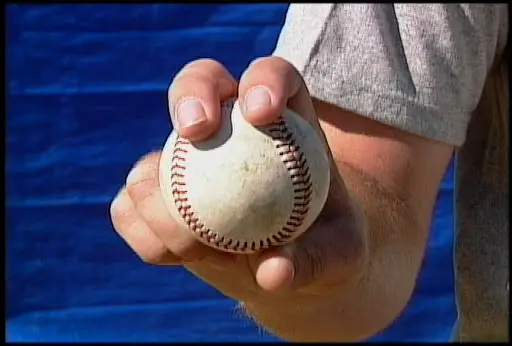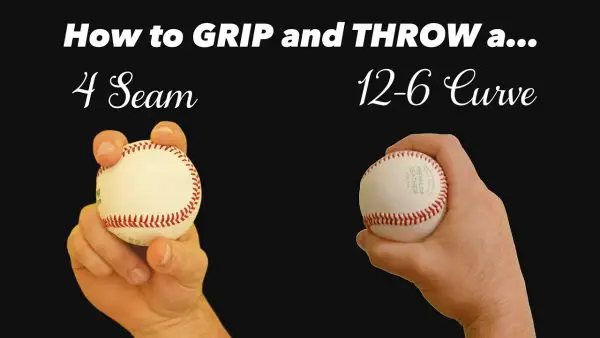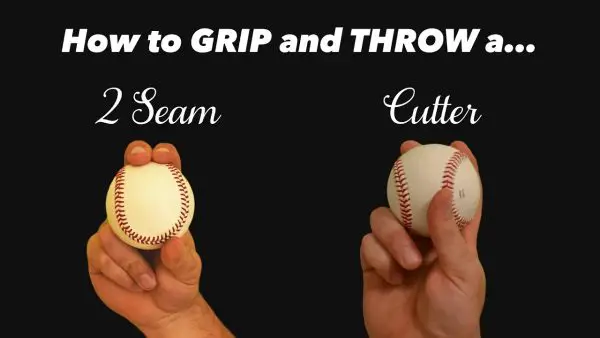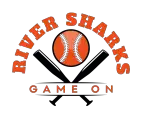For most active spectators of baseball games, it is no new thing to find people who are interested in the comparison between 4 seam versus 2 seam fastballs. Although these two baseball pitches are different from a slider or curveball because of their high-speed rates, their path of motion is different.
How then does a 4 seam differ from a 2 seam fastball? The movement of a 4 seam fastball is straightforward to the plate but the 2 seam may sway to either the left or right based on your bowling arm. When you throw a 2 seam fastball to the middle, a left-handed pitcher will make it go right, while a right-handed pitcher will make it go left.

A pitcher can decide to choose between either of the two for several reasons, however, the difference between the two pitches matters mostly during the game when making pitch decisions.
The seams determine the projections of a baseball through the air. Look closely at the following pictures of fastballs moving over a plate to get a clear view of the different directions they can go.
When to Throw a 4 Seam Fastball
Every pitcher must know at what time during a game, they can throw a good pitch. A pitcher has to be perfect at it. Getting the exact time to throw a 2 seam fastball or a 4 seam fastball can really differentiate between a base hit, strikeout, and a ball.
Every pitcher with a low count number should know that the best pitch to give to a batter is to throw a 4 seam batter. It is necessary especially if you will have to sacrifice a walk before you miss a strike. A pitcher whose count is around 2-0 or 3-1 can do this.
Whenever you are viewing any Major League Baseball game focus on the counts, that way you can see that the pitcher may sideline the 2 seam fastball or other pitch types and choose the 4 seam fastball.
If you have a low count, you'll benefit from throwing this ball because there is no need for any movement when using this type of pitch. The movement of the ball is straight.
How to Grip a 4 Seam Fastball
It is very easy to throw the 4 seam fastball. Unlike the 2 seam fastball, there's no need for you to move the ball. Most young players start off their pitch knowledge with the 4 seam fastball.
Just as we've earlier pointed out, when the pitcher's count will be affected if a strike is thrown, the pitch to use is the 4 seam fastball.
This pitch is named because of how the pitcher holds the ball. The pitcher places two fingers on the parallel seams on the baseball so they lie below the two seams lines.

Gripping a 4 seam baseball requires that your middle finger and index finger are resting on the baseball's seam just the way it is shown in the picture. This seam is commonly called a horseshoe seam because it looks like a horseshoe from the top.
Don't put your thumbs on any of the seams rather they should be exactly below the baseball.
This pitch does not require much effort apart from stressing the backspin strongly. To increase the whip of your fingers, you will need to loosen your grip. The pitch speed will increase with a higher whip.
When to Throw a 2 Seam Fastball
One very necessary skill a pitcher needs to have is knowing the right time to choose a 2 seam fastball rather than a 4 seam fastball. Throwing this pitch type is not advisable if your count is low because it may not remain in the zone for strikes.
With constant practice, you can determine when a 2 seam fastball will be better than it's 4 seam counterpart. But to get better at the 2 seam pitch, ensure that you have been able to utilize the movement of your balls. Your 2 seam pitch will be successful if you are aware of your pitching skills and you understand the mechanics of correct pitching.
Right-handed pitchers understand the rule of thumb that they are at an advantage of the batter is left-handed, considering that the batter has no choice than being trapped with the pitch. This also applies to left-handed pitchers throwing to right-handed batters.
Being on the inside pitch is one of the most difficult to hit. Supposing the ball and the batter meet on the inside pitch, it's easy for the infield to get an effortless out, considering the ball can't go far since it's quite distant to the barrel.
How to Grip a 2 Seam Fastball
To grip a 2 seam fastball you have to concentrate on where you hold the ball. Unlike some other kinds of pitches, the ball does not have fancy flicks to assist its movement. The reason it is known as the 2 seam fastball is due to the placement of your fingers right on the ball's two seams.
The 2 seam fastball grip is done by holding the baseball on its two seams with your middle and index fingers. Your index finger should have more grip before you throw the pitch so that baseball's movement is complemented.

Similar to the four-seam grip, the thumb should be placed comfortably right under the baseball.
The effectiveness of this pitch also depends on how long the individual's fingers as it affects how the 2 seam fastball can move.
Which Pitch Is More Important to Learn?
It doesn't matter if a pitcher plays in the Major league or little league, the 4 seam pitch will definitely be used the most. Matter of factly, you will use more of the 4 seam baseball pitch than the 2 seam pitch.
But some cases show that it's not always true. Some pitchers throw only knuckleballs like R.A. Dickey. They specialize in that but most MLB pitchers throw more 4 seam fastballs.
Comparing the 4 seam fastball to the 2 seam fastball shows that throwing the former is safer. This is due to the zero breaking or movement that the ball experiences. It follows a straight line and is very necessary if a strike is pressing.
How to Get More Movement on a 2 Seam Fastball
You may be needing to increase the moves of your 2 seam fastball but one thing you should not forget is that the approach is not the same as the 4 seam fastball. Since there is no movement for a 4 seam fastball to occur, every finger has to apply the same exact force to the baseball before the throw.
When you increase the pressure on your index fingers, there will be an increased movement in the 2 seams before it is thrown. It may not be what you're used to but try it out first. When you do this, there will be more movement on your ball. This time the ball will start to move vertically instead of swaying from side to side.
Looking for more?
If you would like to read more, then we have hand picked some of our most popular pieces.
Information:
How Many Stitches Are On a Baseball?
Gamechanger VS iScore: Which Is Better For Baseball Scorekeeping?
Rules Of The Game: When Does Softball Season Start?
Equipment & Apparel:
Easton MAKO Youth Baseball Bat Review
Rawlings Prodigy BBCOR review
Best Baseball Glove for 10 Year Old Boy
